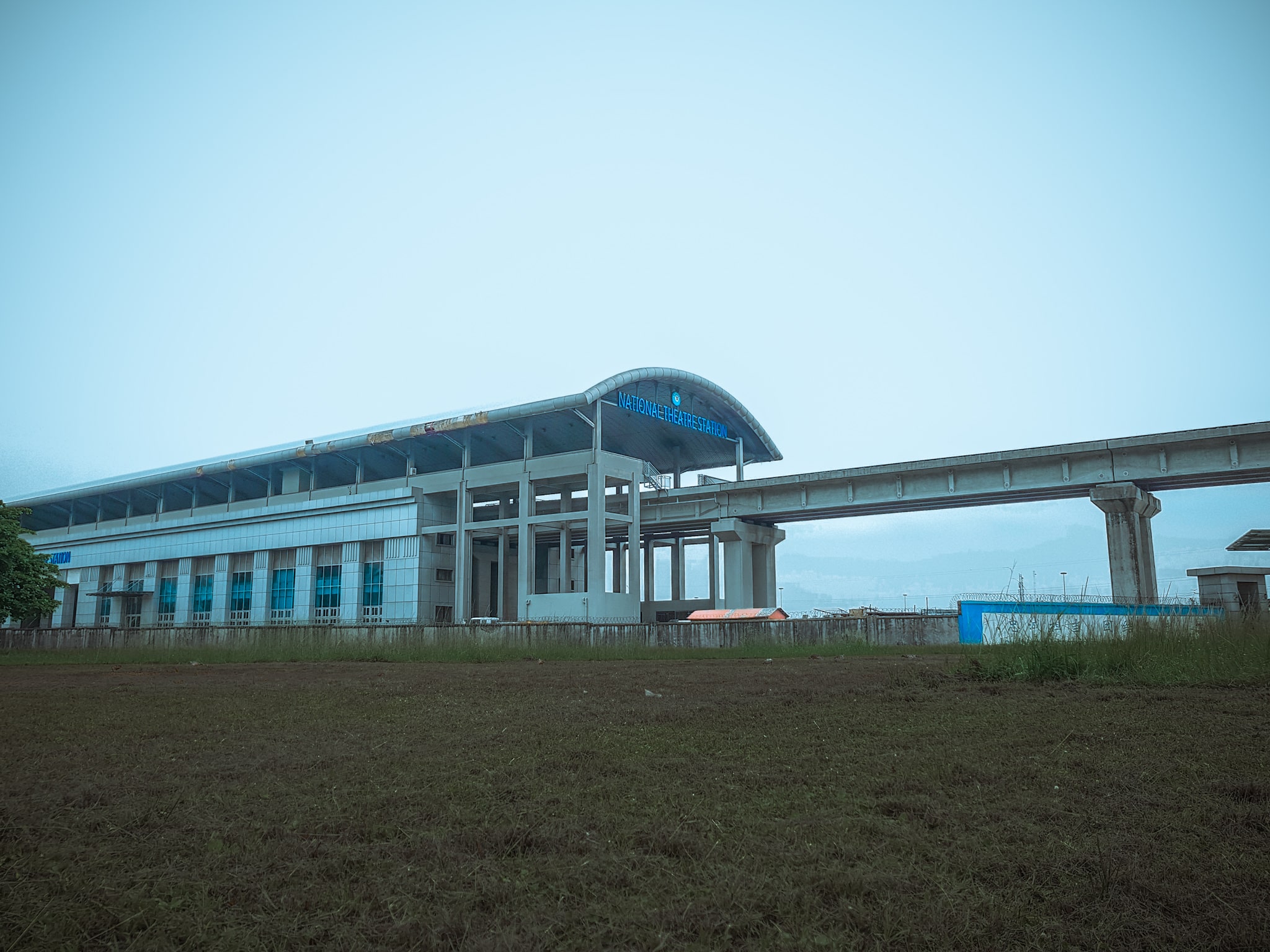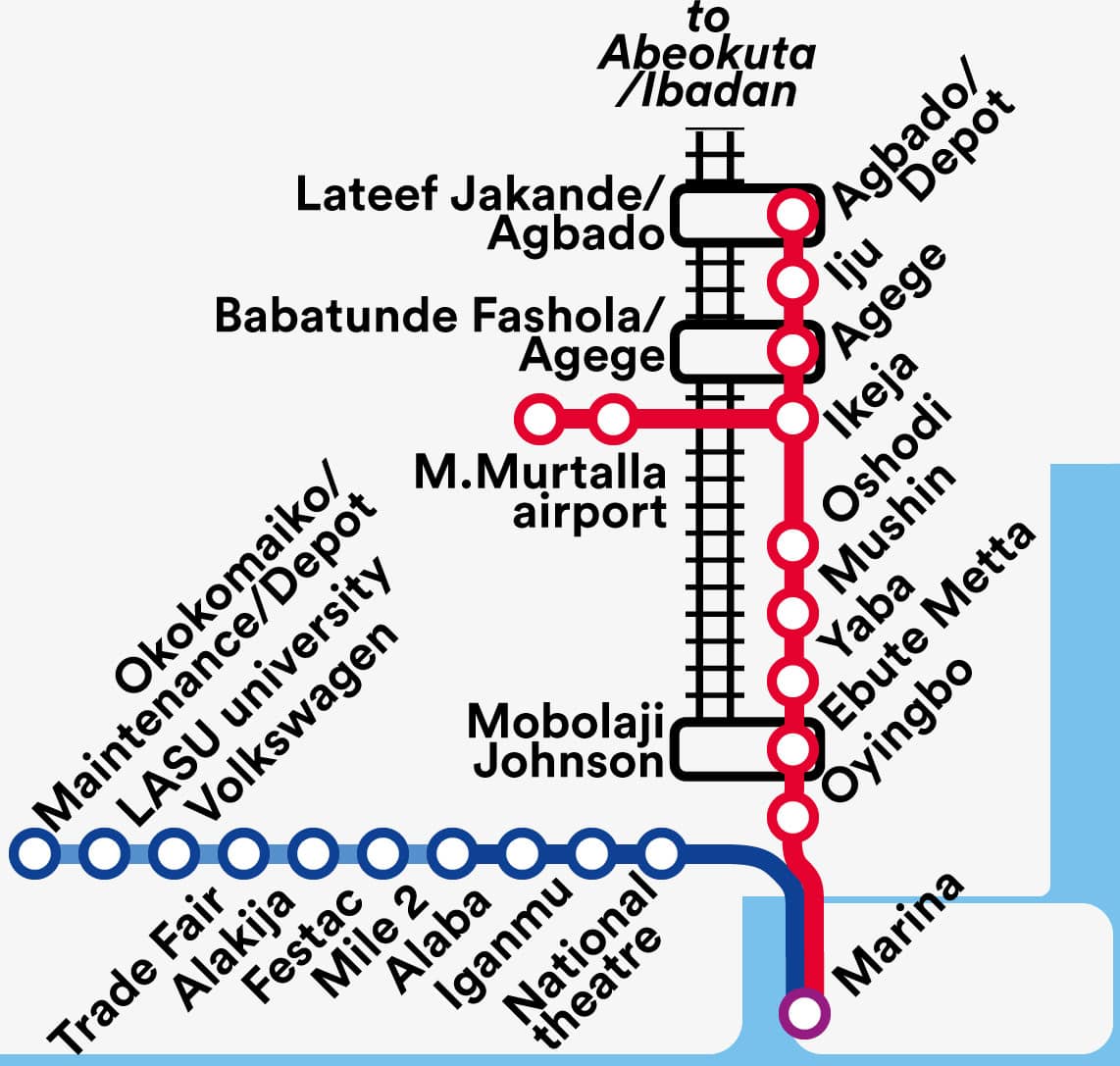World’s worst traffic – second rail line in Lagos

Billboard
Skyscrapper
Halfpage
Lagos, Nigeria’s largest city, has some of the worst traffic in the world. But the city is working on changing that. By opening its second rail line in February 2024, it hopes to ease congestion.
On February 29th, 2024, the second rail line in Lagos opened with the goal of easing the traffic congestion in the Nigerian city. According to the Numbeo database, Lagos has the world’s worst traffic, leading the ranking for waiting time, inefficiency, and CO2 emissions. The new Red Line is the second rail line in Lagos, following the Blue Line. It is 23 miles (37 km) long and runs from Agbado to Oyingbo.
President Bola Tinubu inaugurated the light-rail line that will hopefully ease gridlock in the commercial hub and most populous city of Nigeria. The Red Line stretches from the northern suburb Agbado down to the coastal area of Oyingbo, near the city’s central business district. Trains are expected to run 37 trips a day and transport up to 500,000 passengers when fully operational. This supports the plans of Lagos State to ease the movements of people and goods along major traffic arteries like waterways, roads, and rail.
Millions of hours a day lost in traffic
China Civil Engineering Construction Corp. built the new rail line in Lagos. It comes after the first rail service in the city, which the government inaugurated in September 2023. The Blue Line is 13 km long and connects Mile 2 near the city’s port with the Marina in the heart of Lagos. According to first estimates, this will cut travel time to 25 minutes, whereas before it would have taken 3 hours to make that trip.
The Blue Line started operating 12 years after it was first planned. The opening of the Red Line in Lagos comes only months after, drastically enlarging the city’s rail network. It was part of the agreement with the Chinese investors to link the two services. With a population of over 20 million residents living in a relatively small area. The many traffic jams in Lagos are leading to time loss and economic loss, with commuters spending a staggering 14.1 million hours a day in traffic, according to the Danne Institute of Research (2021).

A feat of engineering and determination
So far, more than 4.2 million passengers have bought electronic cards for boarding the new rail line in Lagos. They also allow access to all public road, marine, and rail transport systems. The next step is the second phase of the Red Line project, which the Lagos Metropolitan Area Transport Authority is developing in three stages, again with the support of the China Civil Engineering Construction Corp. In addition to the current eight stations that run 26.3 km, the Red Line will be extended by 11 km to connect with Marina on the Blue Line. After that, a branch to connect to Murtala Muhammed International Airport is planned. The trainsets are 14-car Talgo Series 8 models with diesel locomotives supplied by US company NRE. They were originally ordered by the state of Wisconsin in 2009 for the use on the Amtrak service between Chicago and Milwaukee, but never entered traffic. Additional rolling stock for the rail lines in Lagos has been ordered from China.
Construction for the Red Line in Lagos had begun in April 2021. The first phase of the rail line was therefore completed in 30 months. Lagos state governor Babajide Sanwo-Olu described this as a “feat of engineering and determination”.

The largest inner-city rail service in Africa
The rail lines in Lagos are part of the city’s masterplan towards achieving “unrivalled urban mobility”, unlocking time and money lost in traffic, and cutting journey times. Eventually, ridership of the Red Line will reach 750,000 passengers a day. The city is planning to construct a total of six rail lines, a monorail, 14 bus rapid transit corridors, over 20 water routes, and an extensive road network. According to Sanwo-Olu, the idea is not just to move forward, but also to “redefine urban transformation across Africa”.
Substantial investments will support the city’s urban transportation infrastructure. Initial estimates for the Red Line project pegged the cost at 135 million USD (124.55 million euro). The final construction costs have not been published. Construction works included 10 vehicular overpasses and pedestrian bridges to separate train traffic from vehicular and pedestrian flows.
Looking back at the Blue Line construction shows that a shortage of funds and a change of government led to many delays. It remains to be seen how the Red Line and the additional four rail lines in Lagos will fare. But the Blue Line had already transported 583,000 passengers in its first four months, making it the largest inner-city rail service provider in Africa.











